Summary: NATO and Zulu watch straps are fun, inexpensive and easy to use. A NATO strap may even prevent loss if a springbar breaks. But not all NATO straps are created equal; here’s what to look out for and some tips on where to find the higher quality types.
Background
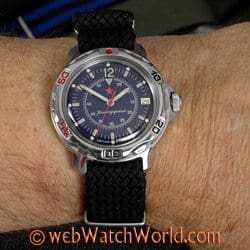 The NATO strap was said to have been first designed for the British military as the “G10” strap. The G10 name supposedly comes from the original NATO requisition number for this type of watch strap used in the military.
The NATO strap was said to have been first designed for the British military as the “G10” strap. The G10 name supposedly comes from the original NATO requisition number for this type of watch strap used in the military.
NATO watch straps are inexpensive because they are usually made from a type of nylon or polyester woven textile (although leather NATO straps can also be found). The woven material is tough and highly resistant to mold, so a NATO strap is an excellent choice for diving, wet weather or tropical use. They have a unique design that will hold a watch even if one springbar is broken, which is a definite plus for diving and rough use.
While the origin of the NATO strap may not be perfectly clear, the use of a NATO-type strap was first introduced to the public consciousness way back in the original James Bond movies. But even that history is a bit unclear, with some saying that Bond first wore a NATO strap (actually a Zulu strap, and I’ll explain the differences in a minute) in Dr. No; some say Goldfinger. He wore one also in Thunderball and perhaps other films.
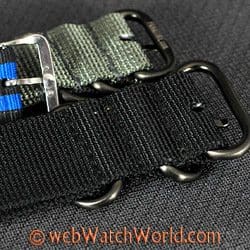 The textile strap that Bond used under his Rolex was way too thin, looking like perhaps a 16 mm or 18 mm in what I assume was a 20 mm lug width. There are some screen captures on the internet showing the strap and watch combination and it’s obvious that the strap is not what we now consider to be a NATO, which has a two-part strap. Bond’s strap is one piece, with the single piece of textile threaded under both springbars and attached by a single buckle under the wrist. This is now usually called a Zulu strap.
The textile strap that Bond used under his Rolex was way too thin, looking like perhaps a 16 mm or 18 mm in what I assume was a 20 mm lug width. There are some screen captures on the internet showing the strap and watch combination and it’s obvious that the strap is not what we now consider to be a NATO, which has a two-part strap. Bond’s strap is one piece, with the single piece of textile threaded under both springbars and attached by a single buckle under the wrist. This is now usually called a Zulu strap.
A Zulu strap is similar to a NATO strap in that both are usually made from a type of nylon or polyester webbing. But the Zulu strap is one piece and the strap is simply threaded over one springbar, under the watch and over the second springbar. The Zulu can have one or more keeper rings attached to hold the extra length of the strap tip.
There is much confusion about these strap names, and you will probably find other meanings that differ from mine. For example, even some NATO and Zulu strap retailers use the terms interchangeably, with two, three or four ring NATO straps listed by different names.
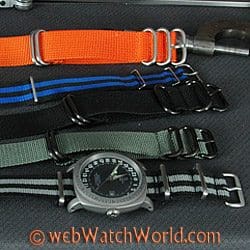 I’ve even seen what I would call a two ring Zulu strap called a three ring NATO! Also, there is also a strap generally known as a “MIL type” or “MIL series”, which is a one-piece strap similar to the real original James Bond textile strap. These usually have a single keeper near the buckle, made from either metal or a fabric loop.
I’ve even seen what I would call a two ring Zulu strap called a three ring NATO! Also, there is also a strap generally known as a “MIL type” or “MIL series”, which is a one-piece strap similar to the real original James Bond textile strap. These usually have a single keeper near the buckle, made from either metal or a fabric loop.
Following are some photos of a “true” Zulu watch strap; this one is what I would call a two ring, but is sold by the retailer as a three ring, which I suppose is correct also if the buckle is counted as a ring. Notice that the two rings are rather overkill for simply holding the tip of the extra watch band length. Some owners cut the strap to fit and then heat-seal the tip with a flame and then the two rings simply hold the extra length of strap. Others fold the extra length of strap back under the rings to keep things nice and tidy, as seen in the last photo in the second section of four below in the “Pricing” section.
How to Choose a NATO Watch Strap
 A NATO strap looks good on just about any watch except for perhaps a dress watch. Military and dive watches look especially good on a NATO strap, but not all owners like a NATO. It is a very utilitarian watch strap, although some of them are fancied up a bit with various color contrasting stripes.
A NATO strap looks good on just about any watch except for perhaps a dress watch. Military and dive watches look especially good on a NATO strap, but not all owners like a NATO. It is a very utilitarian watch strap, although some of them are fancied up a bit with various color contrasting stripes.
Color choice is personal, but there are a few things to look out for when searching for a NATO strap. Be warned that there are many very cheap straps out there — both NATO and other types, of course. You do get what you pay for, to a certain extent, but at least the good NATO straps are usually easy to spot, compared to metal watch bands, which may not have obvious flaws.
 First of all, there is the length. A NATO strap by its nature is designed to be very long to fit over a flight suit or wetsuit when necessary. The extra length is then stowed under the double rings on the side, as you will see in the video below. This means that a NATO strap should be at least 280 mm long; 290 mm is really the preferable minimum length for anyone with a 7.125″ wrist circumference and over.
First of all, there is the length. A NATO strap by its nature is designed to be very long to fit over a flight suit or wetsuit when necessary. The extra length is then stowed under the double rings on the side, as you will see in the video below. This means that a NATO strap should be at least 280 mm long; 290 mm is really the preferable minimum length for anyone with a 7.125″ wrist circumference and over.
Unfortunately, many of the NATO strap retailers don’t list the strap length, and the cheaper straps are usually cheaper for a reason — the material is cut to the absolute minimum length (and thickness). I’ve found NATO watch straps at 270 mm long and less, which may not leave enough extra strap to tuck the excess back under one of the side keepers for anyone with a wrist circumference of 7″ or more. So be careful about length and be sure to ask questions.
 The thickness of the textile webbing is also important. I have used metric micrometer to measure some NATO straps and I have found some of the cheaper straps that are not even 1 mm thick. This is usually way too thin to look good on any watch. It doesn’t take a lot of thickness to make a big difference in the look and feel of the strap; at least 1.5 mm is better, and 2.0 mm is usually best — it feels thicker and sturdier. Since leather, rubber or silicone dive watch straps can be up to 5 mm thick, even a 2 mm NATO webbing can seem thin, so thicker is usually better. There may be NATO straps that are thicker than 2.0 mm, but I haven’t found any.
The thickness of the textile webbing is also important. I have used metric micrometer to measure some NATO straps and I have found some of the cheaper straps that are not even 1 mm thick. This is usually way too thin to look good on any watch. It doesn’t take a lot of thickness to make a big difference in the look and feel of the strap; at least 1.5 mm is better, and 2.0 mm is usually best — it feels thicker and sturdier. Since leather, rubber or silicone dive watch straps can be up to 5 mm thick, even a 2 mm NATO webbing can seem thin, so thicker is usually better. There may be NATO straps that are thicker than 2.0 mm, but I haven’t found any.
 Another big difference comes in the keeper rings. The cheap straps usually have flat stamped metal keepers in a square shape. This is the least expensive method for pumping out hundreds or thousands of keepers. The stamped square keeper isn’t a bad thing in and of itself — and may be preferred by some — but be aware that it seems to be that the higher quality NATO straps usually have thick round keepers made from formed round stainless steel bar stock that is 3 mm thick.
Another big difference comes in the keeper rings. The cheap straps usually have flat stamped metal keepers in a square shape. This is the least expensive method for pumping out hundreds or thousands of keepers. The stamped square keeper isn’t a bad thing in and of itself — and may be preferred by some — but be aware that it seems to be that the higher quality NATO straps usually have thick round keepers made from formed round stainless steel bar stock that is 3 mm thick.
On the best NATO straps, the keepers are sewn into the fabric with single or double rows of stitching on either side of the metal. This is definitely the preferred method because it greatly enhances the security of the strap. On the sewn strap, the strap material will be doubled up to hold the metal keeper, so the strap can be 4.0 mm or more thick at that point.
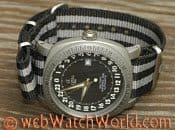 The cheap NATO straps are heat sealed or possibly glued to hold the keepers; this not only looks cheap, it rather defeats the entire purpose of the NATO strap as a utility workhorse, designed solely to keep the watch on the wearer’s wrist under the most extreme conditions.
The cheap NATO straps are heat sealed or possibly glued to hold the keepers; this not only looks cheap, it rather defeats the entire purpose of the NATO strap as a utility workhorse, designed solely to keep the watch on the wearer’s wrist under the most extreme conditions.
Some cheap NATO straps are so bad that the shiny melted polyester can be seen on either side of the keeper, where the manufacturer used a simple hot iron to melt the material. Always check to make sure the strap is sewn on either side of the keepers and the buckle — it’s not always obvious in the online photos and even some of the higher-end NATO strap manufacturers use the heat sealing method, I discovered to my dismay.
 The holes made in the strap for the buckle pin and the tip of the strap are usually made by passing a very hot iron through and over. This is the case usually on every NATO strap, but the better straps will have an even heat seal at the holes and a rounded tip on the end of the strap with an even layer of heat sealing that is obvious. The melted polyester material must be thick and even to keep the material from fraying.
The holes made in the strap for the buckle pin and the tip of the strap are usually made by passing a very hot iron through and over. This is the case usually on every NATO strap, but the better straps will have an even heat seal at the holes and a rounded tip on the end of the strap with an even layer of heat sealing that is obvious. The melted polyester material must be thick and even to keep the material from fraying.
You can see in the video one brand new (blue and black) NATO strap that is already fraying. Note also that the thicker webbing will naturally provide a better heat seal at the holes and the tip of the strap because there is more material to melt.
A Note on Strap Width and Keepers
 Some watches, like the Alpha 24-hour watch shown in these photos, have odd-sized lug widths. The Alpha has a 23 mm lug width and I have other watches with a 19 mm lug width. An odd-sized lug width shouldn’t is usually not a problem for any type of non-metal watch band; simply buy the next size up. 0.5 mm on either side is almost nothing and I have never found a non-metal watch band or strap of the next larger size that can’t be fit into an odd-sized lug width.
Some watches, like the Alpha 24-hour watch shown in these photos, have odd-sized lug widths. The Alpha has a 23 mm lug width and I have other watches with a 19 mm lug width. An odd-sized lug width shouldn’t is usually not a problem for any type of non-metal watch band; simply buy the next size up. 0.5 mm on either side is almost nothing and I have never found a non-metal watch band or strap of the next larger size that can’t be fit into an odd-sized lug width.
I originally purchased a 22 mm gray and black NATO strap for the Alpha, but the slight 0.5 mm gap on either side bothered me a bit. It was very difficult to find another gray and black NATO strap in 24 mm, especially with sewn keepers and a 280 mm plus length. But I finally found one and it fits perfectly on the Alpha and looks great.
So if you have a watch with a 19 mm lug width, you will probably find that a 20 mm NATO will easily fit. A 23 mm lug width will surely fit a 24 mm NATO. This may open up many more choices in colors and types.
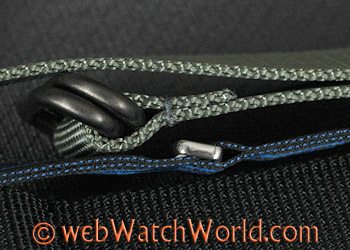 Some NATO straps have four keepers; some have three. The choice is yours. I find that the four keepers (two on each side) give the most rugged look, but I’d have to honestly say that the extra keeper on the bottom side (the side that holds the actual strap at the 6 o’clock side of the watch) can be a bit much.
Some NATO straps have four keepers; some have three. The choice is yours. I find that the four keepers (two on each side) give the most rugged look, but I’d have to honestly say that the extra keeper on the bottom side (the side that holds the actual strap at the 6 o’clock side of the watch) can be a bit much.
It really isn’t necessary, but some think it balances out the two keepers on the top (12 o’clock) side of the watch. The very heavy-duty NATO straps designed for diving usually have four keepers.
When I wear a strap with four keepers, I usually spread the keepers wide, one way and the other, to give the watch a balanced look.
Installing a NATO Strap
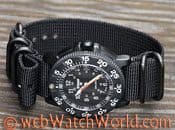 This is illustrated in the video below, as it is much easier to show rather than tell. The most difficult part of installing a NATO strap is removing the original strap from the watch. Once the original strap is removed, the springbars are re-inserted back into the watch and the watch is now ready for the NATO or Zulu strap.
This is illustrated in the video below, as it is much easier to show rather than tell. The most difficult part of installing a NATO strap is removing the original strap from the watch. Once the original strap is removed, the springbars are re-inserted back into the watch and the watch is now ready for the NATO or Zulu strap.
The NATO strap has two parts; the longer part that holds the watch case and the shorter part that sits under the watch case and holds the extra keepers. One of the best things about a NATO strap is that it is so easy to install or remove. This makes it a cinch to easily switch strap colors on a moment’s notice.
Pricing
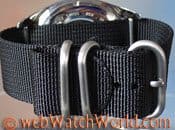 One of the best things about NATO straps is their cost. You should be able to find quality NATO straps for around $13.00 to $24.00 or so. Again, you get what you pay for, to a certain extent. Sometimes you’ll have to pay more to get the exact size, color and quality you’re looking for and sometimes you’ll get lucky and find the perfect NATO strap at a very reasonable price.
One of the best things about NATO straps is their cost. You should be able to find quality NATO straps for around $13.00 to $24.00 or so. Again, you get what you pay for, to a certain extent. Sometimes you’ll have to pay more to get the exact size, color and quality you’re looking for and sometimes you’ll get lucky and find the perfect NATO strap at a very reasonable price.
It’s usually easier to find the common widths and colors at the lower prices; for example, the black, khaki, green and perhaps gray are usually the most common NATO strap types available. 20 mm seems to be the most commonly available width, with 22 mm running a close second. This is probably because many of the original military issued watches had 20 mm lug widths.
Where to Buy NATO Straps
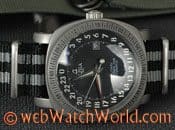 I have a large selection of NATO watch straps at Amazon.com through our affiliate link. If you purchase a strap or other item from our Amazon.com web store, we make a few cents which helps support the site.
I have a large selection of NATO watch straps at Amazon.com through our affiliate link. If you purchase a strap or other item from our Amazon.com web store, we make a few cents which helps support the site.
A large NATO strap retailer is County Comm, located in Santa Clara, California. Their website isn’t the easiest to navigate and I find it difficult to locate the exact strap I’m looking for, but they do have quality straps for the most part. More NATO straps can be found at Broad Arrow, although I’m not sure if they are connected with County Comm or not (they appear to be).
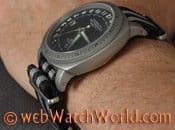 I purchased the blue and black NATO strap seen in the video and some of the photos at West Coast Time, although I’m not at all pleased with its quality, so make sure you use the guidelines described above when purchasing a NATO strap. Strap Code also has some NATO straps, although I haven’t purchased from them.
I purchased the blue and black NATO strap seen in the video and some of the photos at West Coast Time, although I’m not at all pleased with its quality, so make sure you use the guidelines described above when purchasing a NATO strap. Strap Code also has some NATO straps, although I haven’t purchased from them.
I found the 24 mm black and grey NATO strap, with sewn keepers, at Dave’s NATO strap site. Dave said most of the straps are made in Germany and he provided excellent service when I bought the strap seen on the Alpha.
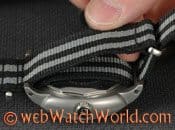 There are many other NATO and Zulu watch strap retailers, so use the guidelines above and ask questions, because most of the retailers do not list all of the pertinent information for some reason.
There are many other NATO and Zulu watch strap retailers, so use the guidelines above and ask questions, because most of the retailers do not list all of the pertinent information for some reason.
By the way, it’s usually easier to find the common widths and colors at the lower prices; for example, the black, khaki, green and perhaps gray are usually the most common NATO strap types available. 20 mm seems to be the most commonly available width, with 22 mm running a close second. This is probably because many of the original military issued watches had 20 mm lug widths.
Conclusion
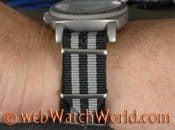 The NATO watch strap is an inexpensive way to give a rugged look to a military watch, pilot watch, dive watch or even some dress watches. This type of strap is also very comfortable and the tropical NATO straps work great in hot and humid weather.
The NATO watch strap is an inexpensive way to give a rugged look to a military watch, pilot watch, dive watch or even some dress watches. This type of strap is also very comfortable and the tropical NATO straps work great in hot and humid weather.
They’re easy to install and you can easily mix and match colors with a collection of NATO straps (once the original strap is removed from the watch).

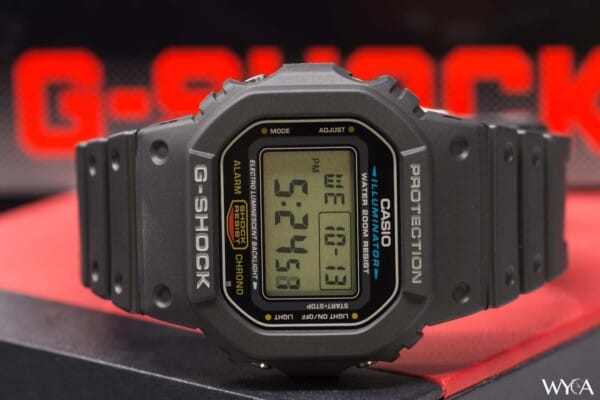
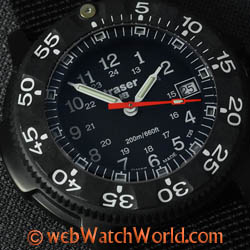
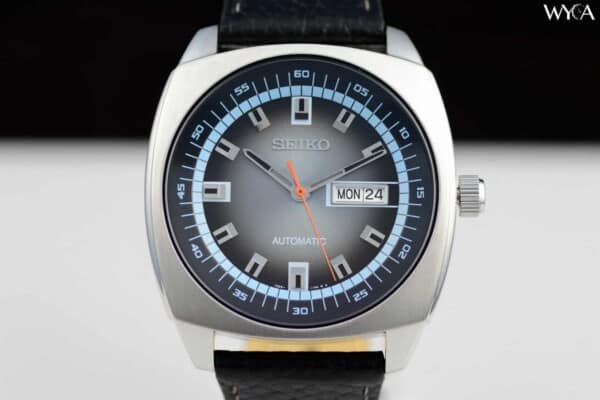
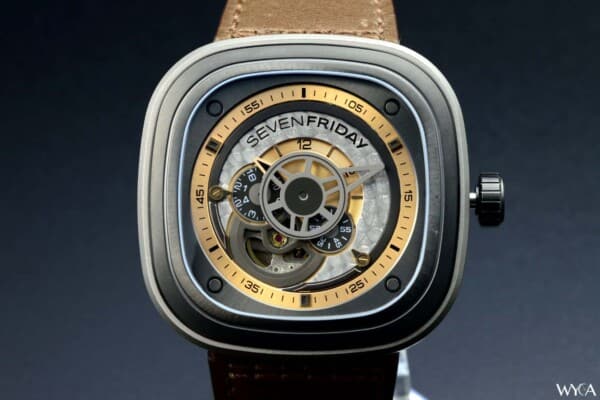
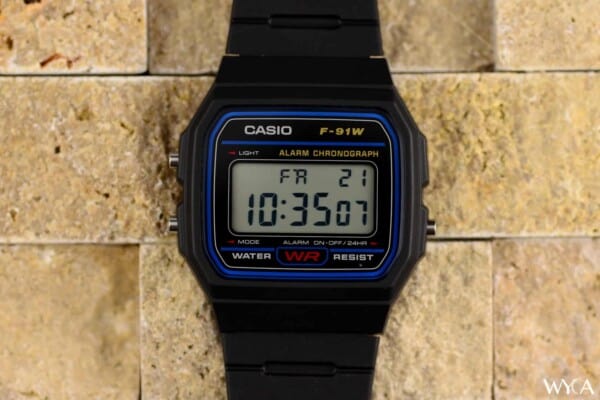

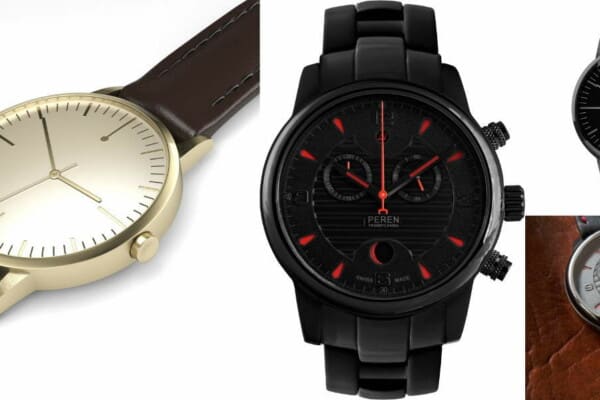

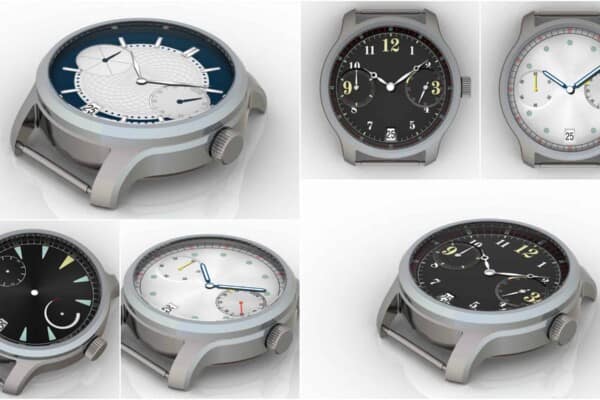
I would like to purchase a tan 11mm nato strap for a woman vintage Rolex I just purchased can you show me my options